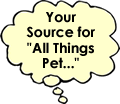Diet or Environment: What Caused Wild Hamsters to Eat Their Young
Share
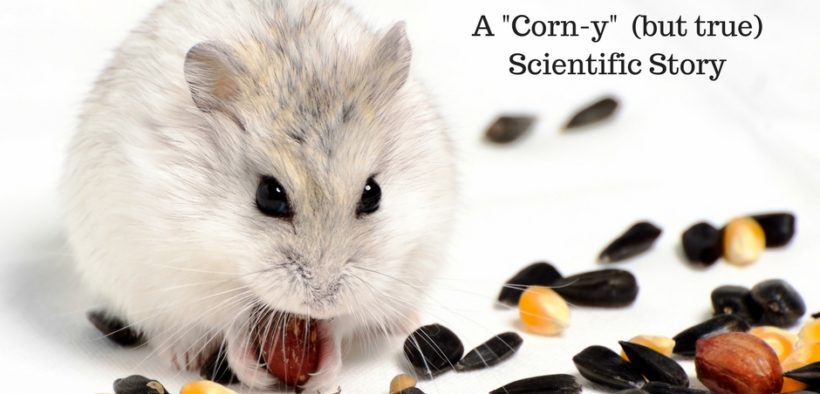
Before we begin this sordid tale, we want to start out by saying we are by no means food snobs. We always tell people to feed the best food you can afford. That goes for feeding you and your pets. We believe that we all do the best we can with the means we have available. But, it’s interesting to see how factors of diet or environment can impact behavior in all species.
We will never lecture you for what you’re feeding. Okay – we take that back – there is one exception to this rule: If you’re feeding a vegan diet to cats, then you’ll WISH you had entered the 7th circle of hell by the time we get done with you. Carnivores need carnivorous diets. If you don’t like that, or you can’t do that, don’t get a cat as a pet. Get a bird. Or a horse. Or a cow. There are lots of herbivores that need homes.
But, other than that important exception, we don’t judge…
Recently, there was an important discovery made about hamsters. But, we feel that the findings apply to all species and we want you to know about it.
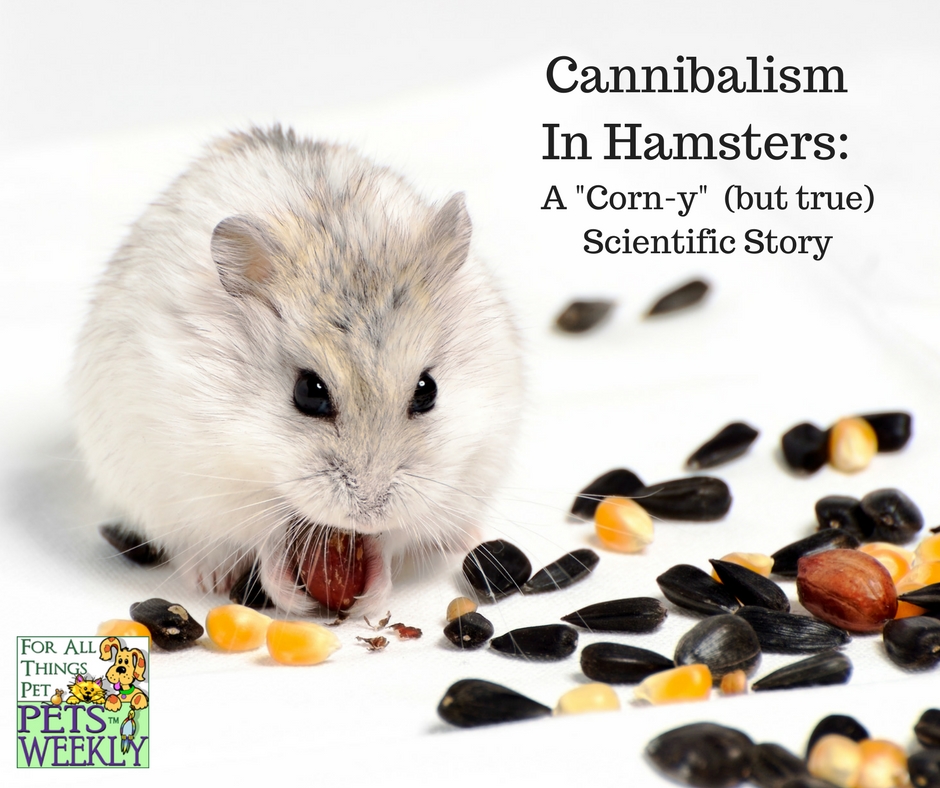
Before we begin this interesting and engaging story, we’ll tell you straight up that we feed our dogs Force from The Honest Kitchen. There are a few reasons for this, but the most important is that one of my dogs becomes aggressive and unstable when he’s on a grain-based diet. That’s a fact. If you don’t believe me, come on over and take him off his grain-free food for a few days – you’ll see…
Our dogs also become “yeasty” (by the way, these 4 Bath Salts May Benefit Your Pets) and develop skin problems if they’re fed grains (especially corn).
For those who doubt our personal findings, we now have scientific evidence, that corn not only makes animals unhealthy, but also a bit insane. In fact, “…improperly cooked maize-based diets have been associated with higher rates of homicide, suicide and cannibalism in humans.”
The whole reason we told you those stories is to tell you this story (bear with me – I promise I’m getting to a point…)
The Critically-Endangered Eurasian Hamsters
In Europe, there’s a specific type of hamster called Cricetus cricetus (yes, really, that’s really what they’re called – they are also known as the Eurasian hamster, black-bellied hamster or common hamster) and these little guys are critically endangered.
The interesting thing is that these little guys are pretty active breeders, which makes their critically-endangered status a bit suspect. So, in 2017, French researchers led by Mathilde Tissier at the University of Strasbourg, set out to learn why they weren’t doing well and uncovered some fascinating information…
Hamsters Being Hamsters in Decline
Traditionally, these little wild hamsters lived peacefully on a diet of grains, roots and insects. They loved wide, open fields and would tunnel beneath these places, living peacefully in their little hamster colonies, minding their own hamster business (which we suspect meant foraging for food, arguing with their hamster spouses, and maybe enjoying a little TV after a hard day at work).
They raised adorable hamster pups and probably even created a well-established hamster democracy where they decided what to do that day. Maybe they delegated tasks like who would hunt worms, who would gather herbs, who would watch over the pups, etc.
Our point is, they were quite content being harmless little hamsters; until one day they weren’t… and it was on that fateful day, that they began eating their young instead of raising them.
Why Would They Cannibalize Their Young?
At first, scientists assumed it was due to humans destroying their native environment. After all, humans had tilled up the hamster’s natural habitat to create vast planting fields for planting crops, and within months – miles and miles of corn grew over the hamsters homes.
It was around that time, when they were surrounded by long stalks of corn, that the hamsters started losing their minds.
Originally researchers scratched their head at the unusual behavior and rapid decline in population, which catapulted them to the critically endangered list.
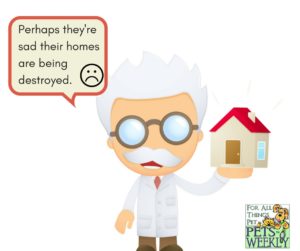
Scientists initially thought, Of course these hamsters must not be breeding; after all, we introduced pesticides, plowed their homes, planted crops in their hibernation area…who would want to breed in those conditions?!
So they studied the effects of farming on these hamsters to see what they could do to help.
As it turns out, farmers don’t care about destroying hamster families because they have their own families to feed. And anyway, the scientists couldn’t specifically define that pesticides were the cause of the sudden deaths. Hamsters were still breeding the same number of pups, and all seemed to be okay.
Yet, the hamster populations were still in rapid decline.
And then the cannibalism began…
And then one day, a scientist saw a hamster eat a baby hamster. Then the hamster ate another baby hamster.
So, the scientists looked a little closer at the behvaior. They noticed that the mama hamsters had begun storing their young right next to all the corn they had collected for winter.
“Well, that’s odd… Why would they store their hamster babies with the corn they gathered?”
And then they saw a hamster eat another little hamster baby. They suddenly understood why the hamsters were storing their babies next to the corn.
Because cannibalism. that’s why…
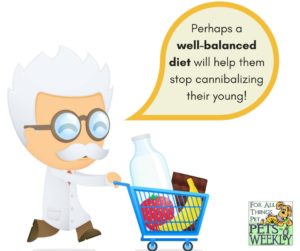
But the cannibalism is not something these little hamsters ever did in the past. So the scientists set up a series of lab experiments and split the hamsters into two groups:
- A group feeding a wheat/clover/worm-based diet.
- A group feeding a corn/clover/worm-based diet.
The results were pretty stunning and I’m going to give you the short version (because this has been a really long story).
How Corn Created Cannibalistic Hamsters
There was no change in the number of pups born to these hamsters. What did change is that the mothers began eating their young. Alive.
- Approximately 80% of the offspring born to mothers consuming wheat-and-clover or wheat-and-worms successfully reached the weaning stage.
- In contrast, only 5% of the baby hamsters born to mothers that consumed corn, instead of wheat, achieved the same milestone.
Now, clearly the wheat group was not without fatalities. After all, only four-fifths of the pups whose parents were eating a WHEAT-CLOVER diet lived. Of course, that means that 1/5 were eaten by their parents. But, even the hamster world is fallible and subject to the occasional infanticide.
Maybe they had an off day, or perhaps the pup was whining a bit more than normal, the mom could have been temporarily insane – we don’t know all their reasons. We do know that no species is without their problem children (or problem parents)…
Other Symptoms and Health Problems of Animals Consuming Corn-Based Diets
There were other symptoms as well. “The cannibal mothers showed other signs of abnormality. The usually cute-and-cuddly hamsters ran in circles, ‘climbing and pounding their feeders,’ when scientists entered the room,” reports The Guardian.
There were physical problems, too. The females had dark, swollen tongues and blood so thick that scientists couldn’t even draw it for samples.
This is an issue we’ve seen in dogs. It’s called “Black-Tongue Syndrome” and in humans, it’s referred to as “3-D Disease” (or Pellagra), which stands for Diarrhea, Dementia and Dermatitis.
Just sayin’, if you’ve been prone to eczema, this may be part of the problem… but maybe you’re not bothered by dementia, dermatitis, diarrhea or eczema. Perhaps Black tongues don’t bother you. But, this might:
“Pellagra is thought to have decimated some three million people in North America and Europe from the mid-18th to the mid-20th century.”
Further study revealed the actual problem. It was all due to a lack of vitamins. All of the hamsters exhibited a deficit of B3 (niacin) to be exact.
You may still be doubting this potential problem… “Nonsense,” you say. “I’ve been eating corn for years and look at me? I’m the picture of perfect health!”
Maybe. But then again, corn may also explain a few things I’ve been wondering about – like the behavior of our country, individuals who abuse or abandon animals, certain politicians who shall not be named, and why the world seems so crazy these days.
“Improperly cooked maize-based diets have been associated with higher rates of homicide, suicide and cannibalism in humans,” the researchers note.
We’re not saying that corn is the reason, We’re just saying that it’s important to look at cause and effect…
Saving the Hamsters from Themselves
Tissier and her team devised a straightforward method to determine if their hamsters, driven by a fondness for corn, were experiencing a comparable condition.
In a subsequent series of experiments, they provided hamsters with corn-based diets, one of which included added B3. As expected, the diet enriched with the vitamin proved effective in alleviating the distressing symptoms and preventing female hamsters from consuming their offspring.
So, the good news is that when scientists introduced a balanced diet back into the hamster diet: cannibalism stopped. The crazy behavior stopped. We’re betting that the little hamsters even felt bad that they ate their little babies and probably wished humans would stop interfering in their lives.
Of course, we can’t be sure…
“Monoculture in agriculture is really bad for biodiversity,” said Baumgart, who has been fighting for years to protect these endangered rodents. “Now we need to take concrete action.”
The Guardian
The moral of this story, and the reason we’re covering it, is because you could also be seriously impacted by corn. Corn is everywhere. It’s in alcohol, syrup, brown sugar, baking soda, Vitamin C, even vinegar. It’s in hundreds of dog foods and cat foods.
All I’m saying is, watch what you eat. But, be very aware of what you feed your dogs and cats and hamsters.
